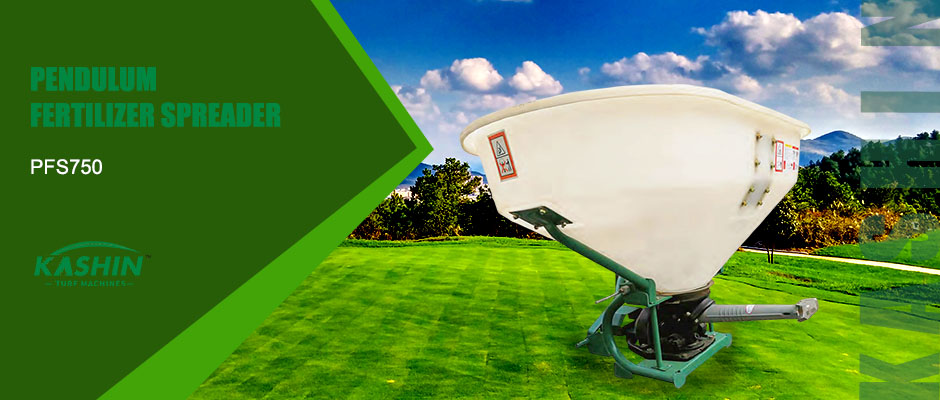Fertilization is an important means of golf course maintenance. Like other maintenance measures, it plays an extremely important role in maintaining the growth of high-quality lawns. However, when giving plants the nutrients they need, basic principles of nutrition must be followed.
一. Basic Laws of Lawn Fertilization
Lawns, like farmland, grassland, and woodland, must have an adequate supply of fertilizers to maintain good growth conditions. However, it is not enough to have a complete range of fertilizers in sufficient quantities. You must also know how to apply fertilizers and scientific methods. Scientific fertilization technology and methods are derived from the basic principles of fertilization, including the law of nutrient compensation, the law of minimum nutrients, the law of diminishing returns, Mizelich’s law, the law of limiting factors, the law of optimal factors and the law of comprehensive factors.
二. Lawn nutrients
1. Elements taken from the soil
Major elements: nitrogen, phosphorus, potassium; minor elements: calcium, magnesium, sulfur; trace elements: iron, manganese, boron, zinc, chlorine, aluminum
3. Reasons for problems with fertilizing green lawns
The amount of fertilizer applied is too large, the fertilizer is applied too frequently; the proportion of fertilizer is inappropriate; one fertilizer is used to the end; the grass type and season are not considered, the diagnosis is lack of, and the same; the fertilizers and organic fertilizers used are not strictly disinfected and contain diseases and insect pests.
三. Reasons for problems with fertilizing green lawns
The amount of fertilizer applied is too large, the fertilizer is applied too frequently; the proportion of fertilizer is inappropriate; one fertilizer is used to the end; the grass type and season are not considered, the diagnosis is lack of, and the same; the fertilizers and organic fertilizers used are not strictly disinfected and contain diseases and insect pests.
四. Current status and existing problems of green lawn fertilization
1. Problems with green lawns in the 1980s
Grass quality is poor. The main manifestations are shallow root system, insufficient lawn density, serious lack of grass on the edge of the green, poor drainage, and severe moss.
2. Problems existing in green lawns since the 1990s
The greens in the north and south are deficient in nitrogen and phosphorus due to inappropriate pH values; the proportions of nitrogen, phosphorus, potassium and other elements in fertilizers are inappropriate; the grass quality is very thick, mainly due to thickened leaves; there are serious pests and diseases; and the grass density does not meet the requirements for putting. ; Grass species are seriously mixed.
3. Reasons for problems with fertilizing green lawns
The amount of fertilizer applied is too large, the fertilizer is applied too frequently; the proportion of fertilizer is inappropriate; one fertilizer is used to the end; the grass type and season are not considered, the diagnosis is lack of, and the same; the fertilizers and organic fertilizers used are not strictly disinfected and contain diseases and insect pests.

五. Principles of fertilizing green lawns
1. Climate principle: The climate varies throughout the year, and lawns, especially golf course lawns, are very sensitive to climate change. Therefore, climate change is one of the basis for fertilizing lawns at different times.
2. Grass seed principle: According to incomplete statistics, there are thousands of lawn grass species. Different grass species have different sensitivities to fertilizers and can generally be divided into two types: fertilizer-tolerant and barren-tolerant.
3. Soil principle: The chemical components of soil on the earth are basically the same, the only difference is the content. The chemical composition of soil is closely related to rainfall and mineral content. The lack of rain in the north is alkaline, while the rainy south is acidic. Therefore, alkaline soil needs alkali treatment, and acidic soil needs improvement. But don’t overdo it, otherwise it will be difficult for the lawn to adapt. Therefore, one kind of fertilizer cannot be used to the end.
4. Disease principle: Diseases will occur in greens all year round, and the disease incidence is related to temperature and rain. Proper use of fertilizers can reduce or prevent disease occurrence.
5. Moisture principle: Fertilizer and moisture are positively correlated under certain conditions, that is, the more moisture, the greater the fertilizer effect. In waterless or dry conditions, applying less nitrogen fertilizer can reduce growth, reduce evaporation, and save water resources. On the contrary, applying more phosphorus fertilizer can resist drought.
6. Grass quality principle: Poor green growth conditions, such as sparseness, few new roots, and yellow grass, are all manifestations of nitrogen and phosphorus deficiency. “Small spots” can be opened for local areas of the green where growth is poor.
7. Regional principle: Due to regional differences and other reasons, grass species on the earth vary widely. Lawns growing in the north require less fertilizer than those in the south, so be careful when fertilizing.
8. Maintenance level principle: High-quality lawns such as greens can only be maintained through high-level maintenance operations, otherwise the quality and annual stability of the greens will deteriorate.
9. Economic principle: The green is the face of the club. Although the face is directly related to the economic strength of the club, a good lawn manager will always use limited money wisely.
10. Management principles: The quality of greens reflects the professional level of managers. There are two criteria for evaluating green quality: annual stability and putting suitability. There should be no big ups and downs within a year, and a smooth, green, dense and even hitting surface should be created. This requires a higher level of diagnosis, and the dosage and proportion should be grasped when fertilizing.
Post time: Aug-29-2024
